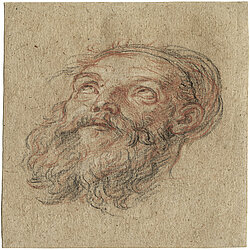Loading the page ...
Antoine Coypel
1661–1722, Paris
In 1672, at the age of eleven, Antoine Coypel accompanied his father Noel to Rome, where the works of art he encountered left a lasting impression. Antoine received a sound academic training; he copied the works of Raphael in the Vatican and was given an award for disegno at the Accademia di San Luca. In Rome he made the acquaintance of the universal genius Gianlorenzo Bernini and the powerful prince of painters Carlo Maratta, who may also have influenced his style. On the advice of Roger de Piles, Coypel interrupted his return journey to France to spend time studying the works of Correggio, Titian and Veronese in Northern Italy. Invested with the valuable potential resulting from his visual impressions, the young artist returned in 1676 to Paris, where he began a chequered career marked by ups and downs. In 1681 Coypel was accepted into the Academy; in 1685 he was appointed peintre ordinaire to the Duke of Orléans, the brother of the king, and from then on enjoyed the special protection of the House of Orléans. The outbreak of the Nine Years’ War in 1688 marked a temporary caesura in Coypel’s career, as important state commissions evaporated for almost a decade. His search for new patrons was accompanied by a change in style. Hitherto Coypel had specialised in monumental religious and mythological paintings à la Lebrun. Now, however, he turned to cabinet painting, becoming a passionate advocate of rubénisme, a style in which pre-eminence was given to warm, sensuous colours and Baroque verve
Archive
